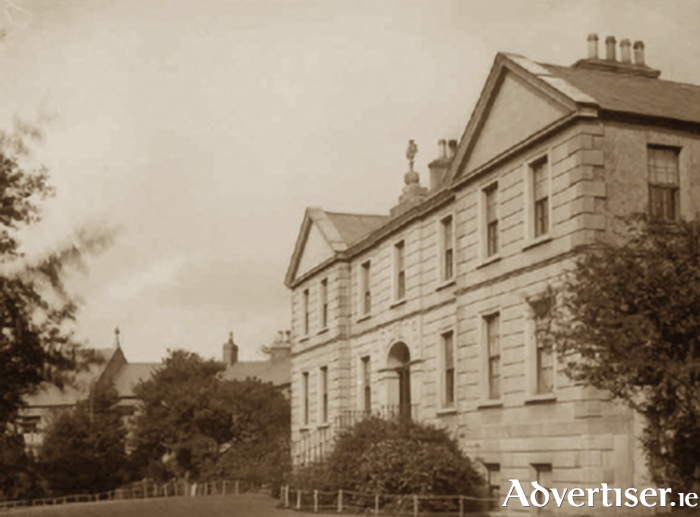On 14 October 1845, Daniel O’Connell had breakfast with the Sisters of Mercy at their new convent building on Altamont Street, Westport. One hundred and eighty years after work on the project began in October 1842, the dilapidated structure is a testament to a long and complex history.
The Magdalene Asylum across the road from the convent operated through the Famine years. It is shown in Griffith's Valuation (1850s ) as the property of George Browne, 3rd Marquess of Sligo. In November 1861, the Dowager Marchioness of Sligo donated £30 worth of bedding. In May 1876, the asylum was referred to as the 'former Magdalene Asylum' by Mayo Grand Jury, suggesting it had closed. Westport Workhouse overtook it as a place to put desperate women to work. A published return for the month ending 31 October 1849 shows that hundreds of women participated in commercial activities at the workhouse and auxiliary workhouses at Louisburgh and Kilmeena. The activities included sewing, spinning, and manufacturing linen. These ‘Industrial Employments’ were in addition to workhouse chores. Forty women worked in the laundry at Westport Workhouse while another twenty scrubbed dormitories.
In June 1850, a list of industrial schools recently established in Mayo was published. A school was established at 'Westport farmyard' under the patronage of the Marchioness of Sligo. It was 'hailed as a great boon to be able to employ 500 children at labour'. We are not told who these children were, how old they were, or the nature of their work. One hundred girls were employed at a school in Louisburgh on Lord Sligo's property. The Reverend Michael Curley opened a school at Castlebar while the Reverend W. B. Stoney was planning one. An industrial school for girls was opened under the patronage of Sir Robert Lynch-Blosse at Balla, while Captain Yelverton opened one at Hazelrock, Killavally. Some 1,200 young women were put to work in the schools. There is little detail on conditions at the schools or how long they operated. We can, however, assume the women and children were not paid for their labour.
In 1851, Mr Morrison, a cloth merchant, opened an industrial school for girls in Westport. Morrison saw an opportunity in the growing popularity of sewed muslin and set about employing girls to work. An instructress was engaged, and the girls were said, by Morrison, to earn up to five shillings per week. The enterprise did not last very long. Morrison's version of the affair tells us that the Catholic clergy forced him to close the school. He was accused of proselytising.
St Columba’s Industrial School for Girls was established adjacent to the Convent of Mercy in Westport by the Sisters of Mercy. It was licenced by the Chief Secretary under the Industrial Schools Act 1868 in April 1871. When the Grand Jury met to discuss the school in July, two themes dominated — the level of funding, if any, that should be given and whether outsiders should be admitted to the school and supported by Westport money. An annual contribution was agreed upon. In practice, and to the dismay of some, children from elsewhere in Ireland were admitted. Shortly after opening, there were thirty-seven girls in the school; it was certified for 105.
One of the earliest court applications to have children committed to St Columba's was made by the Reverend T. Hardiman on behalf of three widows, Jane Gauley, Mary Cassidy, and Bridget Brennan, on 29 April 1872. At Ballinrobe Petty Sessions, the women showed they could not support their children. The court issued the order for the removal of Mary Gauley (11 ), Mary Cassidy (10 ), and Mary Brennan (11 ) and for them to be sent in the care of the Royal Irish Constabulary to the school. Children from outside Mayo included sisters Mary Kate and Bridget Gormley, the daughters of cattle drover John Gormley of Tierboy, Tuam. In October 1905, they were ordered at Tuam Petty Sessions to be committed to the school because their father could not support them. Mary Kate (10 ) and Bridget (renamed Delia ) (9 ) appear in the 1911 Census Return for the school.

